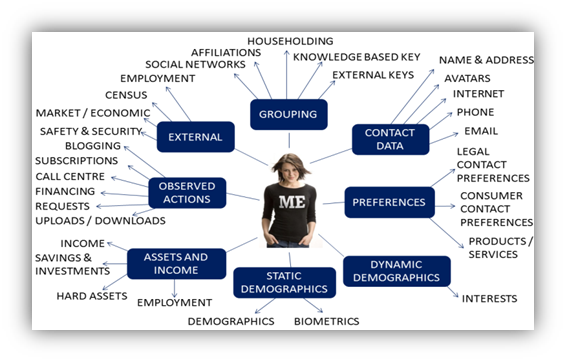5 Easy Steps to Define Your Customer

Identifying your target market is essential to developing effective marketing strategies and expanding your business. Understanding your consumers’ identities, preferences, and requirements enables you to customize your products, services, and communications to effectively reach and engage them. This article will outline five simple methods that will assist you in identifying and defining your customer base. By adhering to these steps, you can obtain valuable insights about your target audience and pave the way for targeted marketing efforts that result in increased conversions and customer satisfaction. Let’s delve into the process of identifying the ideal consumers for your business.
1. Conduct Market Research
What is Marketing Research?
Marketing research is the systematic process of gathering, studying, and interpreting information about a particular market, target audience, or marketing environment. Its primary objective is to provide information and insights to inform marketing strategies, decision-making, and overall business planning.
Marketing research entails collecting data from diverse sources and employing research methodologies to unearth consumer behaviors, market trends, competitive landscapes, and other pertinent factors. The collected data is then analyzed to generate actionable insights that fuel marketing initiatives, product development, consumer engagement, and overall business expansion.
The primary objectives of marketing research are as follows:
- Customers’ Preferences, Needs, Motivations, and Behaviors: Marketing research helps businesses comprehensively understand their target customers. It offers insights into the demographics, psychographics, purchasing patterns, and consumers’ decision-making processes.
By conducting research, businesses can identify and evaluate market opportunities, assess the demand for specific products or services, and identify market gaps or unmet requirements. This enables enterprises to modify their offerings to meet user needs effectively.
- Monitoring the Competition: Marketing research aids in evaluating the competitive landscape by amassing information regarding competitors’ strategies, product offerings, pricing, positioning, and customer perceptions. This data allows businesses to develop competitive strategies and differentiate their products.
Research enables businesses to evaluate the efficacy of marketing strategies, messages, promotional campaigns, and product concepts prior to full implementation. This serves to minimize risks and maximize investment returns.
- Customer Satisfaction and Loyalty Evaluation: Marketing research provides valuable feedback on customer satisfaction, brand perception, and loyalty. Through surveys, interviews, and feedback mechanisms, businesses can gain insight into client experiences, identify improvement opportunities, and strengthen customer relationships.
Marketing research methods include surveys, interviews, focus groups, observational studies, data analysis, and secondary research utilizing existing data sources. The choice of research methods is contingent upon the research objectives, available resources, intended audience, and nature of the research question.
Overall, marketing research is an indispensable instrument for businesses to make informed decisions, understand their consumers, identify market opportunities, and develop effective marketing strategies that correlate with customer requirements and preferences. It enables businesses to remain competitive, customer-centric, and responsive to the constantly shifting market dynamics.
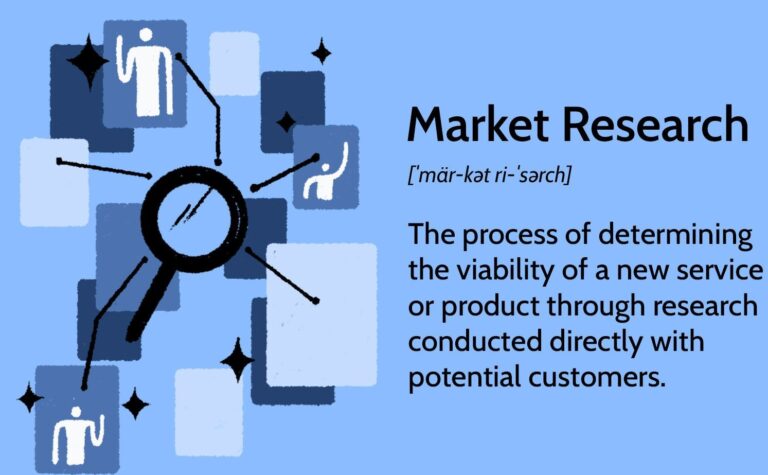
Market Research and Startups
Startups must conduct market research to understand their target market, competition, and customer preferences. There are low-cost methods to collect valuable market research data, even though entrepreneurs frequently have limited budgets. Here are some highlights regarding where and how entrepreneurs can conduct market research on a shoestring budget:
- Online Surveys SurveyMonkey, Google Forms, and Typeform are examples of online survey platforms that offer free or inexpensive options for creating and distributing surveys. Startups can create targeted questionnaires to collect data on consumer preferences, pain points, and purchasing patterns. Utilize social media, email lists, and online communities to maximize responses from your target audience.
- Utilize social media platforms such as Facebook, Twitter, and Instagram to gather information about your target audience. Observe discussions, comments, and reviews pertaining to your industry, products, or rivals. Analyze the sentiment and trends in order to comprehend the needs, opinions, and preferences of customers.
- Analyzing your competitors can provide valuable market intelligence. Investigate their websites, social media presence, content, pricing, and customer reviews. Identify market gaps or differentiation opportunities for your startup. Tools such as SEMrush, SimilarWeb, and Google Alerts can assist you in monitoring competitor activities and market trends.
- Participate in online communities and forums pertinent to your industry or specialization. Reddit, Quora, and industry-specific forums offer opportunities to engage with prospective consumers, ask them questions, and learn about their pain points and interests. This informal research can aid in the formulation of marketing strategies and products.
- Local Networking: Participate in local business associations, chambers of commerce, or industry-specific meetings to interact with other entrepreneurs, professionals, and prospective clients. Networking events provide opportunities to gain insights, exchange ideas, and develop relationships with local market experts.
- Customer Interviews and Feedback: Conduct interviews or feedback sessions with your existing customers or target audience. Provide discounts or incentives to encourage participation. These one-on-one exchanges can yield valuable qualitative insights into their requirements, preferences, and expectations.
- Access academic research, industry reports, and government publications pertinent to your field. Numerous universities, research institutions, and government agencies publish studies and data that can offer industry-specific insights.
Remember that market research need not be an expensive endeavor. Entrepreneurs on a limited budget can gain valuable market insights by combining free or low-cost resources, online tools, and targeted approaches. The key is to be resourceful, imaginative, and intent on collecting data that correlates with your business objectives and target audience.
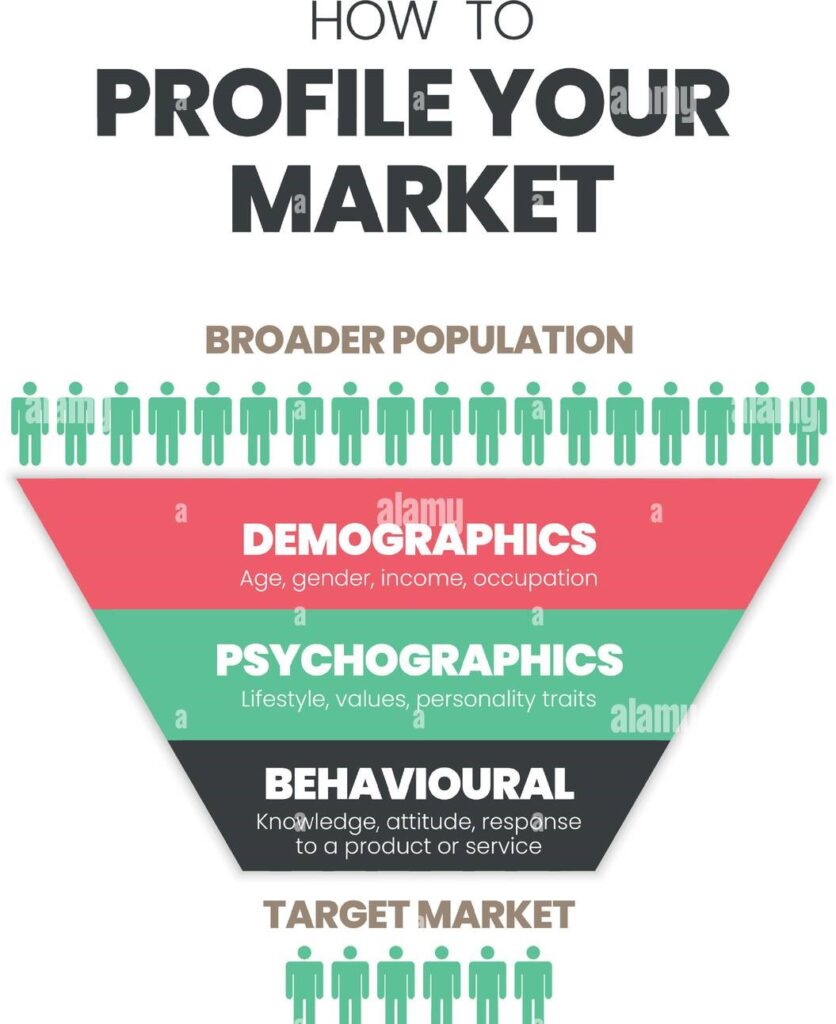
2. Define Your Ideal Customer Profile
What is Customer Profiling?
Customer profiling, also known as customer segmentation or customer persona development, is the process of developing detailed customer profiles or customer personas that represent various segments of a target audience. It involves dividing consumers according to their shared characteristics, behaviors, preferences, and requirements to understand their motivations better and tailor marketing efforts accordingly. Profiling consumers enables businesses to gain insight into their clients’ demographics, psychographics, purchasing patterns, and interests.
- Typically, customer profiling begins with collecting and analyzing data from various sources, such as customer surveys, transaction records, website analytics, and market research. This information then identifies consumer patterns and commonalities, enabling businesses to segment them into distinct groups.
Customer profiling offers numerous advantages to enterprises. It enables more targeted and personalized marketing strategies, for starters. Businesses can increase the efficacy of their marketing campaigns by tailoring their messages and offerings to the specific requirements and preferences of each consumer segment.
- Customer profiling also facilitates product development and innovation. By understanding the pain points and desires of various consumer segments, businesses can identify opportunities for new product features or services that appeal to specific requirements, allowing them to maintain a competitive advantage.
Additionally, consumer profiling allows businesses to optimize resource allocation. By focusing on the most valuable customer segments, businesses can allocate their marketing expenditures more efficiently, maximize their customer acquisition and retention efforts, and increase their overall return on investment.
- Customer profiling is a strategic process that aids organizations in gaining a deeper comprehension of their intended audience. By developing comprehensive customer profiles, businesses can modify their marketing strategies, enhance product offerings, and optimize resource allocation to satisfy the requirements and preferences of distinct customer segments.
Steps to Define Your Ideal Customer Profile
- Analyze Existing Customer Data: Analyze the information regarding your current customer base. Consider commonalities of demographics, geographic location, purchasing behaviors, and psychographic traits. This information can shed light on the types of consumers already attracted to your business. This analysis facilitates the identification of patterns and characteristics that can influence the development of your ideal customer profile.
- Conduct Market Research: Even with a limited budget, startups can conduct market research to acquire information about their intended audience. Utilize online surveys, social media monitoring, and competitor analysis to gain insight into customers’ preferences, requirements, and sore points. This research lets you comprehend the market environment and refine your ideal customer profile based on real-time data.
- After collecting data and gaining insights, divide your target audience into categories based on shared characteristics or behaviors. This segmentation permits the customization of marketing strategies and messages to specific consumer segments. By focusing on specific segments, entrepreneurs can more effectively allocate their resources and create targeted marketing campaigns.
- Develop consumer personas or fictional representations of your ideal clients. These personas should include demographic information, job roles, interests, obstacles, and objectives. Create well-rounded personas that reflect the diversity of your target audience using the information garnered from market research and customer data analysis. These personas are used to align marketing efforts and create personalized content and experiences.
- Refine and Repeat: Your optimal client profile is not set in stone. Continue refining and iterating your consumer profiles as your startup evolves and collects additional data. Monitor your marketing campaigns’ effectiveness, customer feedback, and adjust accordingly. Maintain adaptability and responsiveness to market and consumer preferences as they evolve.
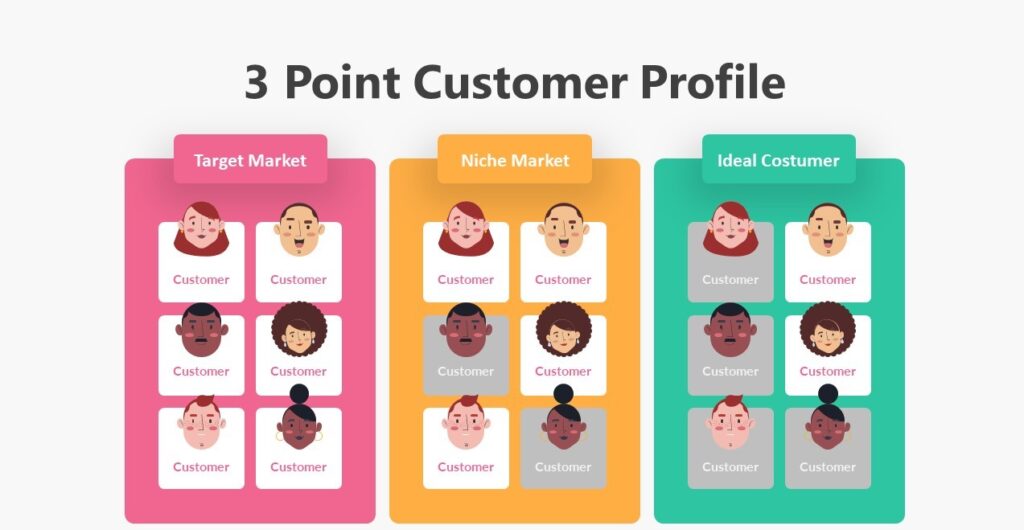
3. Analyze Existing Customer Data
What is Customer Data?
Customer data refers to the information and specifics about consumers businesses collect and preserve. It includes many data elements that offer insights into consumer characteristics, behaviors, preferences, and interactions with a company’s products or services. Various channels, including online platforms, in-store interactions, customer surveys, and transactional records, are typically used to collect customer data. It plays a crucial role in molding marketing strategies, personalizing consumer experiences, and enhancing business performance as a whole.
Customer data may contain both personal and non-personal details. Personal data refers to information that can directly or indirectly identify a person, such as names, addresses, contact information, and demographic data. Information such as purchase history, browsing behavior, product preferences, and consumer feedback are examples of non-personal data.
Businesses use customer data to gain insights into consumer behavior, comprehend customer requirements, segment their target audience, and create targeted marketing campaigns. Businesses can make decisions based on data by analyzing customer data, increasing customer satisfaction, improving product offerings, and fostering customer loyalty.
Nonetheless, businesses need to manage consumer information responsibly and with privacy in mind. Data protection and privacy regulations, such as the European Union’s General Data Protection Regulation (GDPR), outline data collection, storage, usage, and consumer consent requirements.
In conclusion, customer data refers to the information that businesses compile about consumers to comprehend customer preferences, personalize experiences, and make informed business decisions. When managed ethically and responsibly, it is a valuable asset that can stimulate consumer engagement, brand loyalty, and business expansion.
Which are Some Types of Customer Data?
It is essential to prioritize data privacy and security when it comes to managing consumer data. There are, however, certain categories of consumer data that are relatively straightforward to manage and widely employed by businesses for marketing purposes. Here are some instances:
Demographic data comprises characteristics such as age, gender, income, education, marital status, and geographic location. This information is typically readily available or can be gathered through consumer surveys.
Businesses frequently collect contact information, including email addresses, phone numbers, and mailing addresses. While it is essential to manage this information responsibly for communication purposes, it is relatively simple to do so.
Purchase History: Keeping track of a customer’s purchase history provides valuable insight into their purchasing habits, preferences, and behavior. Typically, this information is managed by consumer relationship management (CRM) or point-of-sale (POS) systems.
Website Analytics: By utilizing website analytics tools, businesses can collect information regarding consumer interactions with their website. This includes page views, exit rates, site duration, and click-through rates. Data from website analytics can provide valuable insights into consumer preferences and behavior.
Data from social media platforms, such as followers, favorites, shares, and remarks, can provide insight into consumer engagement and interests. Frequently, these platforms provide straightforward analytics and insights to access and manage.
Responses to surveys enable businesses to collect specific data regarding consumer preferences, opinions, and satisfaction levels. Online forms or email can be used to conduct surveys, and the collected data can be readily analyzed for actionable insights.
Even though these categories of consumer data are relatively simple to manage, businesses should still adhere to data protection best practices and comply with all applicable privacy laws and regulations. Prioritize transparency, obtain the required consent, and implement appropriate security measures when handling customer data to preserve trust and protect privacy.
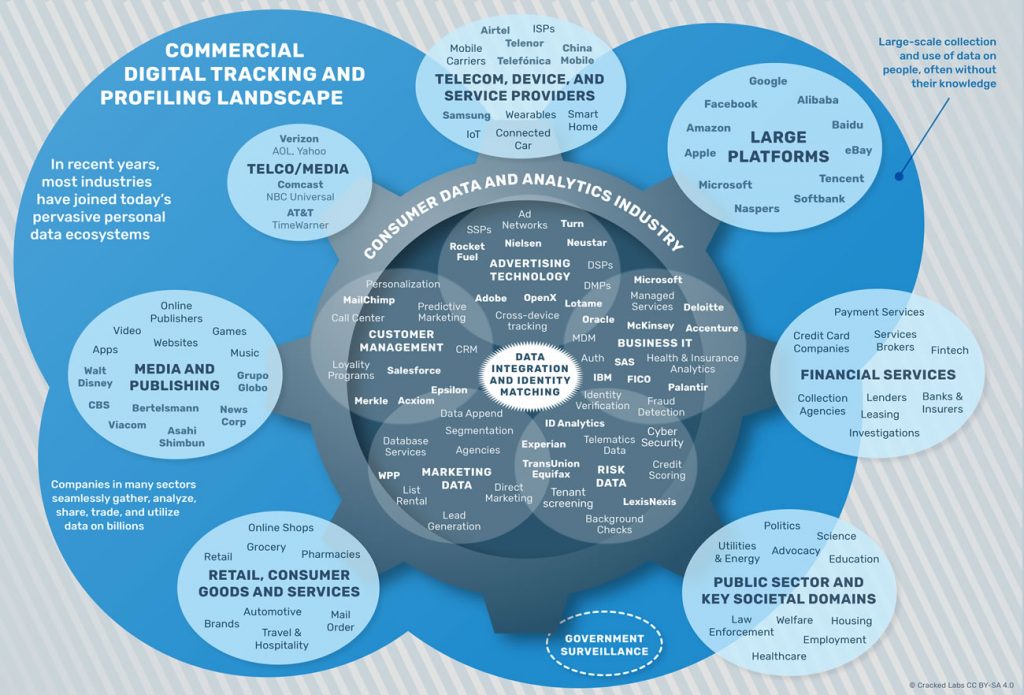
What are some additional types of customer data that are not cost-effective and require more experience to manage?
There are consumer data types that may require additional resources, expertise, and financial investment to effectively manage. Typically, these types of data provide deeper insights, but they may also present additional complexities and difficulties. Here are some instances:
Tracking and analyzing consumer actions, such as website navigation, product interactions, clickstream data, and transaction history, constitutes behavioral data. While acquiring this data can be relatively simple, analyzing and interpreting it requires sophisticated analytics tools, data integration, and data analysis expertise.
Analyzing consumer sentiments, opinions, and emotions conveyed through customer feedback, social media mentions, online reviews, and customer support interactions constitutes sentiment analysis. Implementing sentiment analysis necessitates the use of complex natural language processing (NLP) algorithms and text mining techniques in order to effectively extract insights.
Identifying Purchase Triggers and Patterns requires an analysis of customer behavior and external factors that influence purchasing decisions. Customer data, market research, and predictive analytics are required to identify patterns, correlations, and predictive models in this data.
Tracking a customer’s location and using that information to personalize marketing communications, target local promotions, or analyze foot traffic patterns is an example of geolocation data. Handling geolocation data requires proficiency in geospatial analysis, compliance with data privacy regulations, and the implementation of secure methods for accumulating and storing location data.
Cross-Channel Data Integration: Integrating data from multiple marketing channels, such as email, social media, website, mobile applications, and offline interactions, can offer a holistic view of consumer behavior and preferences. Nonetheless, sophisticated data management techniques, data governance, and robust data integration tools are required for managing and integrating data from multiple sources.
Customer Lifetime Value (CLV) is calculated by considering a customer’s purchase history, average order value, retention rate, and future revenue potential to determine their long-term value. This requires advanced data analysis techniques, predictive modeling, and customer analytics expertise.
Handling these types of consumer data may necessitate investments in technology infrastructure, data analytics tools, data security measures, and personnel with experience in data analysis and compliance with privacy regulations. When dealing with these more complex and sensitive consumer data types, it is crucial to ensure compliance with data protection laws, maintain data privacy, and prioritize data ethics.

4. Segment Your Audience
What is Audience Segmentation?
Audience segmentation is the process of dividing a target market or audience into distinct groups or segments based on shared characteristics, preferences, or behaviors. It involves categorizing individuals or organizations into homogenous groups in order to understand their specific requirements better and tailor marketing strategies to engage them effectively.
Audience segmentation aims to establish meaningful and relevant segments for the business. Marketers can create targeted messages and campaigns that resonate with each segment by categorizing individuals with similar characteristics or behaviors. This strategy enables companies to maximize their marketing efforts by concentrating their efforts on the most valuable and receptive audience segments.
There are numerous methods for segmenting an audience, and the specific criteria utilized depend on the character of the business and the marketing campaign’s objectives. Common segmentation criteria include:
-
Demographics: This involves segmenting based on demographic factors such as age, gender, income level, education level, occupation, and geographic location.
-
Psychographics: Psychographic segmentation considers the psychological and lifestyle characteristics of the target audience. It includes factors such as values, interests, attitudes, personality traits, and behavior patterns.
-
Behavior: Behavioral segmentation focuses on customer actions, such as purchase history, frequency of purchases, brand loyalty, product usage, and engagement with marketing channels.
-
Needs and Benefits: This segmentation approach groups individuals based on specific needs or benefits they seek from a product or service. It aims to understand customer motivations and align offerings to meet those specific needs.
-
Customer Journey: Segmenting based on the stages of the customer journey helps in tailoring marketing messages and strategies to meet customers’ unique needs and challenges at each stage, from awareness to post-purchase.
Through audience segmentation, businesses can develop more effective marketing strategies, personalize communication, optimize product offerings, and increase customer satisfaction. Audience segmentation enables businesses to focus their efforts on specific segments, increasing the likelihood of establishing a deeper connection with consumers and generating positive business outcomes.
Let’s explain audience segmentation step by step!
Step 1: Recognize Your Audience
To begin with, we must comprehend the target audience for our message. Consider who might be interested in the services we provide. Are they young or old? Do they reside in a particular area or engage in particular pastimes? By learning about our audience, we can create categories of individuals who share certain characteristics.
Step 2: Determine their commonalities
Next, we search for characteristics shared by members of each cohort. For instance, some individuals may appreciate playing video games, while others prefer to peruse novels. These shared characteristics or interests allow us to form distinct groups or segments.
Step 3. Give each group a name in.
To maintain order, we assign each cohort a unique appellation. Suppose we have a group of video game enthusiasts, so we call them the “Gaming Squad,” and another group of avid readers, the “Reading Buddies.” Naming the categories aids in recalling who they are and what they enjoy.
Step 4. Create Personalized Messages for Them
Now that we know who our various categories are, we can construct messages and stories that will appeal to them. For the Gaming Squad, we could discuss the most thrilling new video games, whereas the Reading Buddies could exchange book suggestions. We can connect with them more effectively by tailoring our messages to each group.
Step 5. Make them feel exceptional.
We want every group to feel unique and understood. We demonstrate that we understand their preferences and value their opinions. We consider their feedback and make adjustments accordingly. Thus, each group will understand that we value them and wish to provide them with items they will enjoy.
5. Test and Refine
How is the Process of Test and Refine?
The process of test and refine entails experimenting with your marketing strategies and making continuous adjustments based on feedback and data. Let’s examine it in greater depth:
Establish Clear Objectives: Begin by establishing clear objectives for your marketing initiatives. What do you wish to accomplish? Is it increasing sales, enhancing brand recognition, or increasing website traffic? Setting specific objectives will assist you in measuring your progress and identifying areas for testing and improvement.
Develop a Plan for evaluating: Develop a plan for evaluating the various components of your marketing strategies. This may involve evaluating various messages, visuals, offers, and even marketing channels. Determine which specific aspect you wish to evaluate and how you will evaluate its efficacy.
Utilize the Test: Put your exam to the test. This could involve conducting an A/B test to compare two variants of a marketing campaign or testing a new marketing channel to determine its effectiveness. Ensure that pertinent data and metrics are collected during the testing phase.
Monitor and Measure: Monitor test results and compile data. This may include website traffic, conversion rates, click-through rates, and customer feedback. Utilize analytical tools or software to collect precise and dependable data.
Analyze the Results: After collecting the data, you should analyze it to determine how well your test performed. Compare the various versions or channels you’ve tested to determine which produced the best results based on your goals.
Refine and Optimize: Informed by the analysis, make decisions to refine your marketing strategies. Focus on the elements that performed well and make adjustments to those that did not. It may entail revising your messaging, reimagining your visuals, or reallocating your marketing budget.
Marketing is a continuous process, so it is essential to resume the test and refine cycle. Continuously test new concepts, collect data, assess outcomes, and adjust your strategies accordingly. This iterative strategy permits you to enhance your marketing efforts over time.
Remember that the process of testing and refining requires flexibility and perseverance. It involves gaining knowledge from your experiments and utilizing that information to make data-driven decisions. By continually testing and refining your marketing strategies, you can maximize your efforts and attain your marketing objectives more successfully.
5 testing that are easy and budget friendly
Subject Line Testing in Email Marketing: When sending emails to your audience, you should test various subject lines to determine which one has the highest open rate. Create two variations of the subject line and send each to a subset of the email list. Determine the subject line that produces the highest open rates by comparing the rates of each version’s subject lines.
Call-to-Action (CTA) Testing on Landing Pages: If you have a landing page with a call-to-action button, test different button design, color, text, and placement variations. Split your website’s traffic between the various versions and measure the click-through rates to determine which version results in the highest number of conversions.
If you are conducting social media advertising campaigns, you should test different ad variations. Experiment with various ad visuals, headlines, and calls-to-action to determine which combinations produce the highest levels of engagement or click-through rates. Most social media platforms have built-in A/B testing tools that allow you to measure the effectiveness of various ad variations.
Test various page layouts or designs for your website’s most important pages, such as the homepage and product pages. Create two variants and arbitrarily display them to site visitors. Measure metrics such as time on page, exit rate, and conversion rate to identify the layout with the highest user engagement and conversion rates.
Messaging Testing on Social Media: On your social media channels, test out various messaging strategies. Examine various content formats (e.g., text posts, images, videos) or tonalities (e.g., informative, humorous, inspirational). Analyze engagement metrics such as likes, shares, comments, and click-through rates to determine which messages resonate most with your audience.
Remember that the key is to test one element at a time in order to isolate the effect of the specific variation being tested. By conducting these types of experiments, you can gain valuable insights and make data-driven decisions to optimize your marketing efforts without expending a substantial amount of money.
How to Use the Testing in a Real Scenario
Suppose you own a company that sells dog products such as toys, gifts, and accessories. You want to evaluate various approaches to messaging on your social media channels to determine which is most effective for your audience. Here’s how the test could be implemented:
Step 1: Choose the social media channels: Determine the most prevalent social media platforms among dog owners, such as Facebook and Instagram. These platforms will be tested extensively.
Step 2: Specify the Test: Determine the element you wish to evaluate, which in this instance is the messaging strategy. You may wish to experiment with various content formats, such as text posts, images, and videos, and various tones of voice, such as informative, humorous, and inspirational.
Step 3: Create two or more variants of social media posts with distinct messaging approaches for testing purposes. You could, for instance, create one post highlighting the benefits of a specific dog toy in an informative tone and another post highlighting canines enjoying the toy in a light-hearted and humorous tone.
Step 4: Plan and distribute: Utilize the scheduling feature of your preferred social media platform to schedule your posts for various dates and times. For a fair comparison, ensure that each variation reaches a comparable audience size and demographics.
Step 5: After the posts have been published, it is necessary to monitor the engagement metrics provided by the social media platform. Examine metrics such as likes, shares, remarks, and click-through rates to determine which variation generates the most audience interaction and engagement.
Step 6: Analyze the Results: Compare the effectiveness of each variation of the post based on the engagement metrics. Determine which one obtains the maximum levels of audience engagement. This variation can provide insights into the messaging strategy that resonates most with your consumers who own dogs.
Step 7: Implement the Learnings: Utilize the test’s results to refine your social media messaging strategy. Implement the successful messaging strategy in your future social media posts in order to increase audience engagement and communication effectiveness.
By implementing this test, you can gain a deeper understanding of your target audience and tailor your social media messages to attract and engage them. Remember to analyze the results, make decisions based on data, and iterate and improve your social media marketing based on the insights you gain.
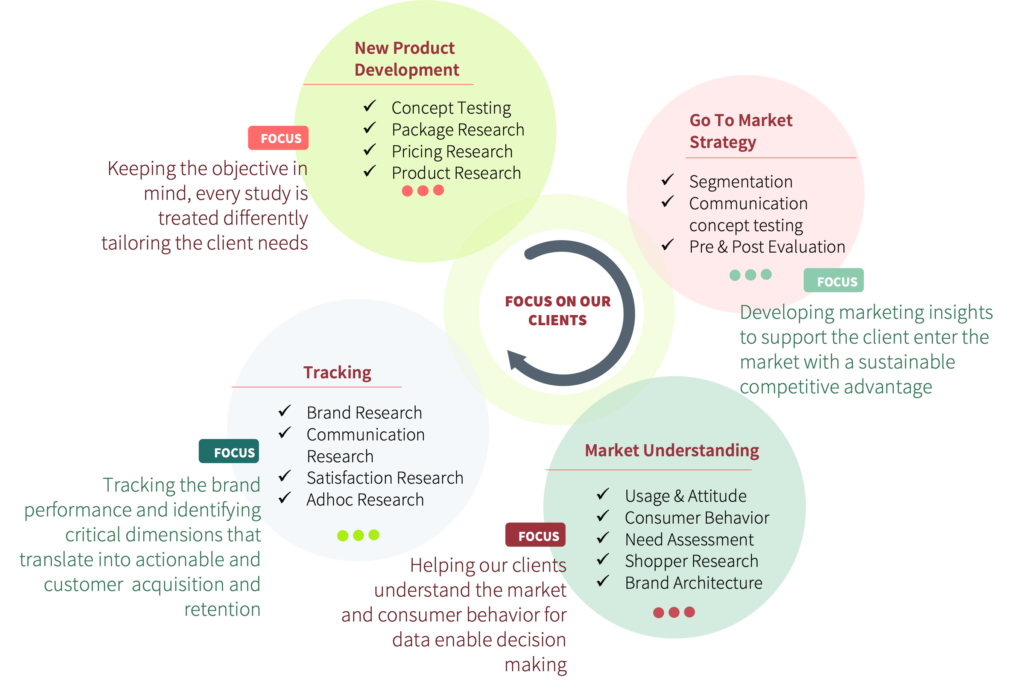
Conclusion
Understanding your consumers and tailoring your marketing strategies to their requirements is crucial for success in today’s competitive business environment. Audience segmentation, consumer profiling, and continuous testing and refinement are potent tools that enable businesses to connect with their target audience effectively.
By segmenting your audience, you can create marketing messages and experiences that resonate with various consumer groups. This enables you to convey the appropriate message to the appropriate individuals at the appropriate time, thereby increasing the likelihood of engagement and conversion.
Customer profiling enables you to gain a deeper understanding of the characteristics, behaviors, and preferences of your prospective customers. By creating comprehensive customer profiles or personas, you can humanize your audience and develop targeted marketing strategies that cater to their particular needs and desires.
Continuous testing and improvement guarantees that your marketing efforts are optimized and in line with your objectives. By experimenting with various elements of your campaigns, monitoring the results, and making decisions based on data, you can refine your strategies, increase customer engagement, and generate better business outcomes.
Remember that customer understanding is an ongoing process. The markets change, consumer preferences shift, and new opportunities emerge. By remaining attuned to your audience and adapting your strategies accordingly, you can establish solid customer relationships, increase customer loyalty, and achieve sustainable business growth.
In conclusion, by investing time and effort into audience segmentation, customer profiling, and continuous testing and refinement, businesses can gain valuable insights into their target audience, develop effective marketing strategies, and establish meaningful connections that are essential for success in today’s dynamic business environment.

